Service History
The wooden two masted schooner
Pride was built in Black River, Ohio by Henry D. Root in 1866. The vessel was initially owned equally by James Chapman, his wife Elizabeth Chapman and their eldest son, Chas B. Chapman of Black River, Ohio. The Chapman's used the ship to trade general goods between ports on Lake Erie. In 1867
Pride was sold to Horace Duncan Moore, manufacturer of tools and owner of a mill in Saugatuck, Michigan. A year later in 1868,
Pride sold 2/3 of the vessel to Charles Deering of Chicago, and the vessels homeport was changed to Chicago. In 1870
Pride was sold again to Gideon Truesdell of Kenosha and the vessel was then homeported out of Kenosha.
On April 11, 1871,
Pride was loaded with feed and sundries when the vessel ran ashore on Little Point Sable, Michigan. Two wrecking tugs were required to remove the vessel from the beach, and it was towed to Pentwater, Michigan for repairs. In 1874 the Miller Brothers of Pleasant Prairie, Wisconsin: Lysander, John and Charles Chauncey "C.C." Miller became equal 1/3 owners. Kenosha remained its homeport and C.C. Miller became its new master. In 1877 Captain Miller bought out his brothers and registered as sole owner and Master of the ship. On 14 December 1877 Captain Miller's son and ship's mate, Charles J. Miller died in the vessels cabin while he was making repairs to the ship.
Pride was fully rebuilt over the winter of 1877-78
In April 1881,
Pride struck the dock while entering Racine harbor. The vessel developed a leak after the collision that could not be curbed and in August 1881 the vessel went into dry dock at Milwaukee for repairs. In April 1883 Captain Miller's other son and first mate Louis Miller contracted diphtheria and passed away after a very short illness. The next year C.C. Miller started his own lumber yard in Pleasant Prairie and started using the vessel to supply his lumber yard.
Pride started hauling small cargos of building stone to Kenosha from Sturgeon Bay. In 1885 the vessel was engaged in hauling wood from Baileys Harbor to Racine and Kenosha. In August 1885 the schooner strained under a heavy load and sea conditions and sprung a leak off Manitowoc. Two thirds of its deck load of wood was cast into the water. The ship was then towed to Milwaukee for repairs.
In 1886
Pride was sold again to the Hervig Brother and its homeport was changed to Racine, Wisconsin. In winter 1886 the ship's foremast was replaced at Milwaukee over the winter alongside the vessels stern and other repairs at a cost of $400. In November 1887 the Hervig brothers began advertising the sale of the
Pride. On 26 June 1888 when the ship was unloaded, Captain N.P. Hervig mistakenly hired two competing gangs to unload the vessel. Trouble was avoided by paying one group $12 for their work while the other group settled on $2 and a keg of beer. At the end of the season another round of advertisements were place offering the vessel for sale - adding "FOR SALE -CHEAP" and "in good sailing order, has been repaired the last two seasons." Still no buyer came forward.
In February 1890 word was leaked to the press that the schooner needed to be hauled out for extensive repairs to its hull. The next day an advertisement appeared offering the ship "FOR SALE - CHEAP" this time with the provision "if sold before March 15". Again, no takers. Repairs were made and the ship entered service in mid-June. In February 1891, the Hervig brothers published their perennial advertisements for the sale of the ship, indicated that it was offered at "a very low figure" asserting that the
Pride was "one of the staunchest and fast sailing schooners on the lake, of her size." Again, no interested parties came forward. In July 1891, the cook nearly drowned while loading lumber at White Lake, Michigan. On the night of 10 October 1891, Captain Hervig mistook on the rolling mill for the pierhead light at Racine and dropped anchor inside the breakers. At daybreak when the tug brought the vessel inside the harbor there was no crew aboard, only the captain, his wife and child.
In February 1893 a buyer was finally found for the ship. Jacob Wilson of Milwaukee became the new owner and Master. Although only valued for $800, Captain Wilson purchased
Pride for $1,000 and the vessels homeport was changed to Milwaukee. In June 1893,
Pride was bound from Herring Creek, Michigan for Milwaukee when it suddenly capsized off Big Point Au Sable apparently from misloading. The crew escaped to the yawl and rowed against heavy seas to shore. The schooner was left floating in the lake. The steamer
P.D. Armour spotted
Pride floating on its side with its spars out parallel to the surface of the water drifting in a field of bark. It was righted, pumped out and towed to Milwaukee.
Final Voyage
On 20 August 1898,
Pride departed Milwaukee and arrived at Egg Harbor on the afternoon of 22 August. After setting anchor, Captain Wilson went ashore to contract for a cargo of wood while his son and ship's Mate Thomas Wilson set the canvas to dry and started preparing dinner. When the captain returned, the sky looked ominous. The two men took in the canvas before dinner and as they sat down at the table, a squall struck from the northwest. The men instinctively ran up to the bow and let out 270 feet of chain and attempted to swing around the anchor to face the storm. They were too slow and the vessel was caught broadside. Thomas Wilson returned aft to retrieve rain gear and at the moment the ship became caught in a tornado. The vessel whipped around its anchor and was struck broadside by a gust that capsized the ship.
Pride was flipped over with such force that its two masts became imbedded to the lake bottom. Captain Wilson clung to the overturned hull and was later rescued by a local fisherman. A search of the area was made for Thomas Wilson, but he was not located.
On 24 August the wrecking tug
Albert J. Wright with the assistance of the Sturgeon Bay life saving crew righted the
Pride An extensive search of the ship was made, but Thomas was not found. Inside the cabin however, was Hobson, the Wilson's Newfoundland, happy to be freed and very hungry. Thomas Wilson's body was recovered from the water a week later. The
Pride was then taken in tow to Sturgeon Bay and its hulk was exchanged to satisfy their wrecking costs. The ship was tied up on the north side of the Leathem & Smith coal dock near the wrecked steamer
Fountain City and area locally referred to as the "marine cemetery". The schooner, however, sprung a leak, broke its ties, and drifted away from the dock. The located where
Pride ended up on Dunlap Reef put it in the path of vessels transiting Sturgeon Bay and it became a hazard to navigation.
By April 1900, the shipyard began to give serious consideration to raising and restoring the schooner probably with the encouragement of Captain Wilson who had gone to work at the yard. In June the tugs
Neslon and
Leathem moved the
Pride to the west end of the railroad bridge where it was run ashore. Although it was supposed to be pumped out, work on the vessel went no further and the
Pride slowly went to pieces.
Pride had been transferred to Leathem & Smith to cover their salvage costs, but with inaction after removing it from the reef, the vessel fell apart. In the words of the
Door County Advocate (1901). "this was a case where both the wrecker and the wrecked were losers."
Today
Pride is in very shallow water inside of Sturgeon Bay.
Pride retains excellent archaeological integrity with most of the vessel hull components present and protected by the sediment of the bay.
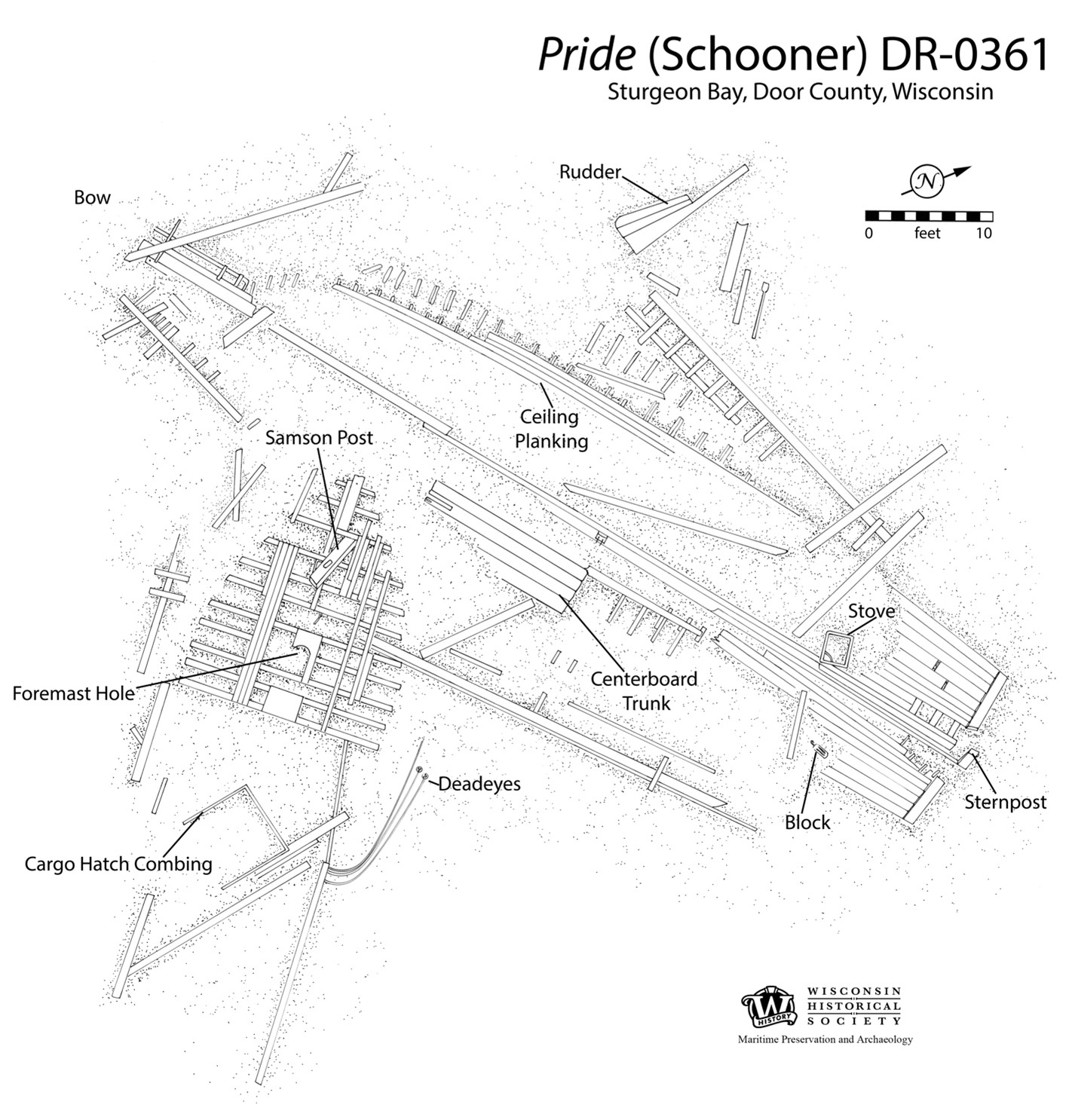
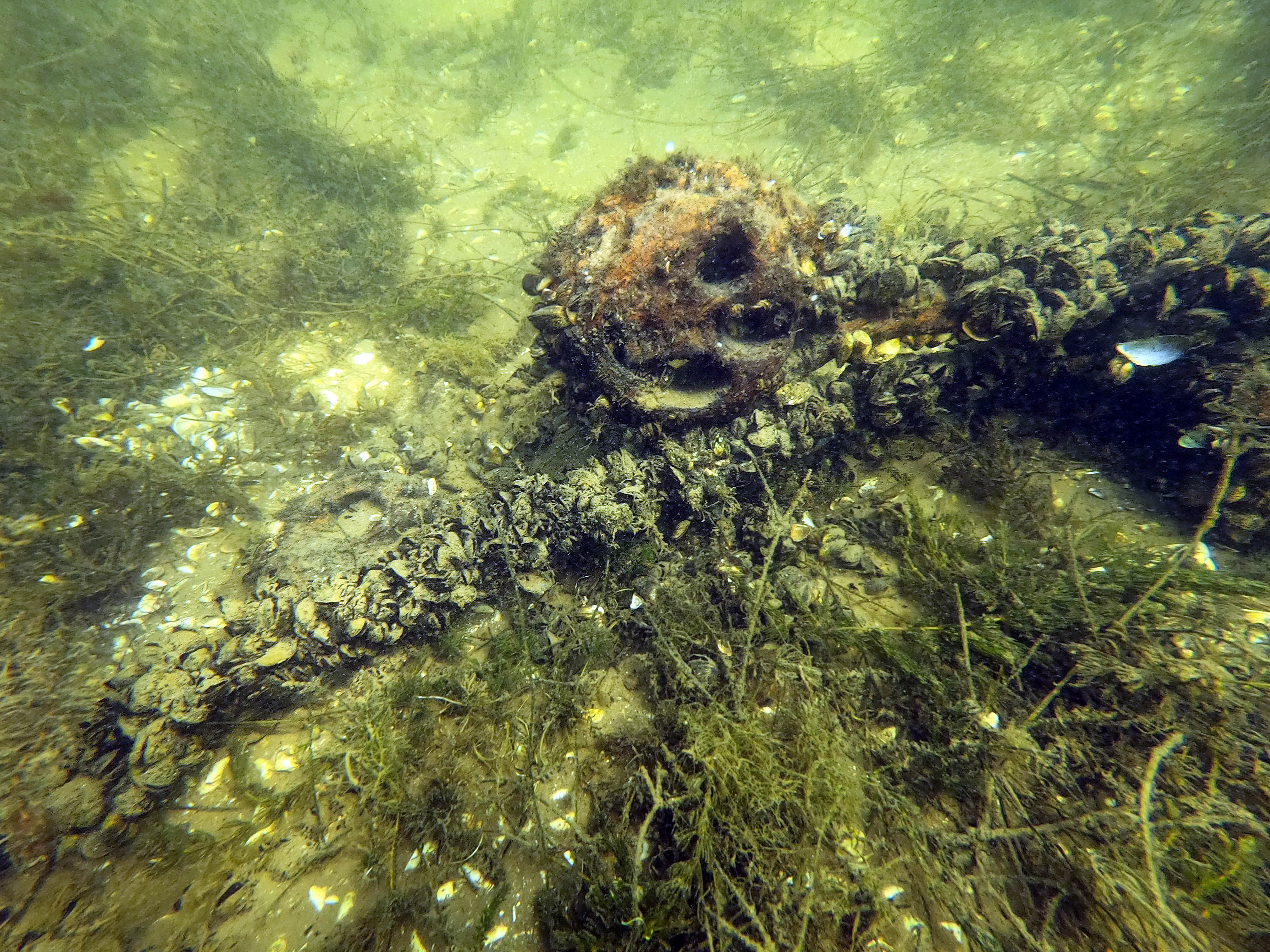
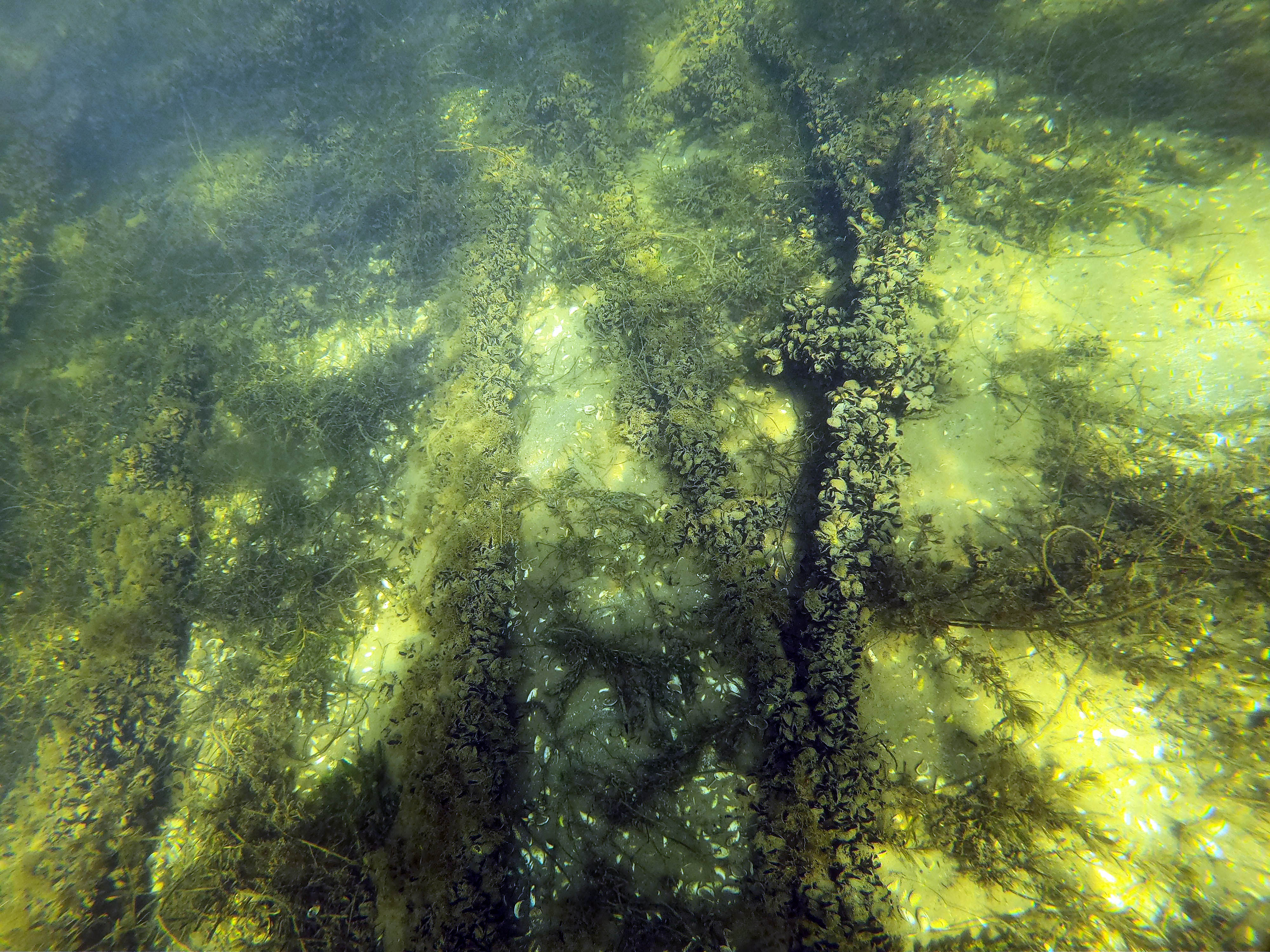
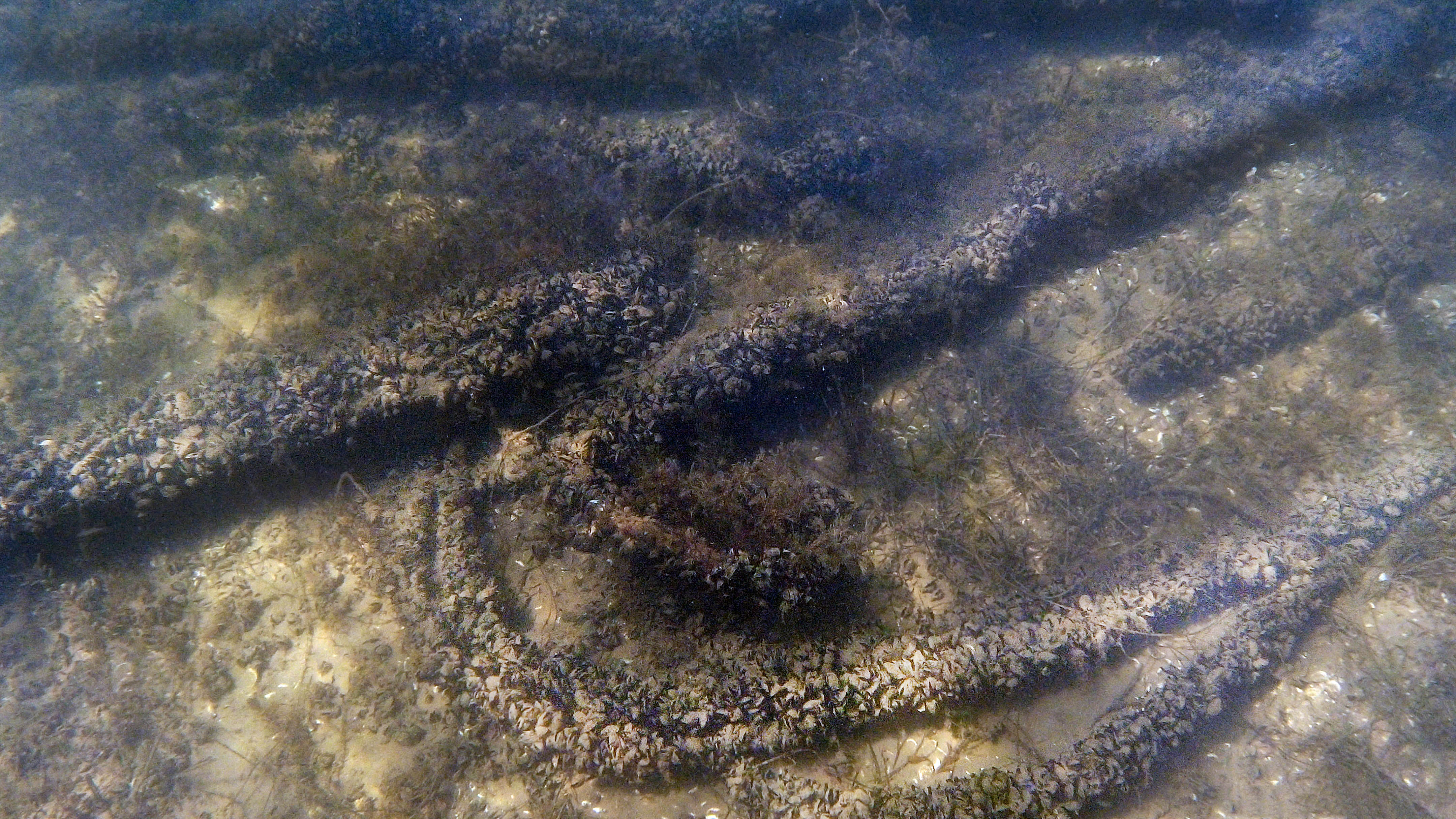
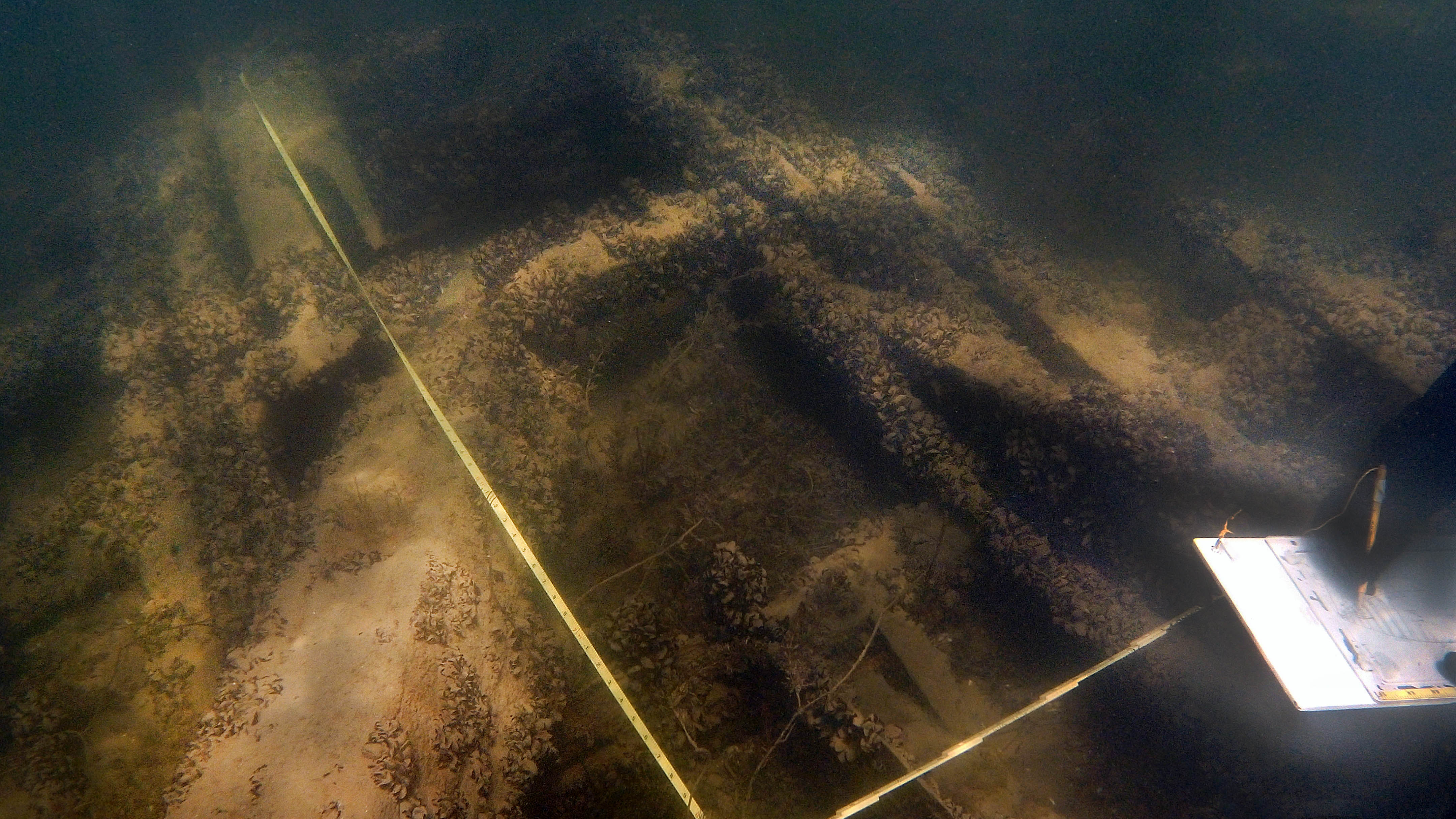
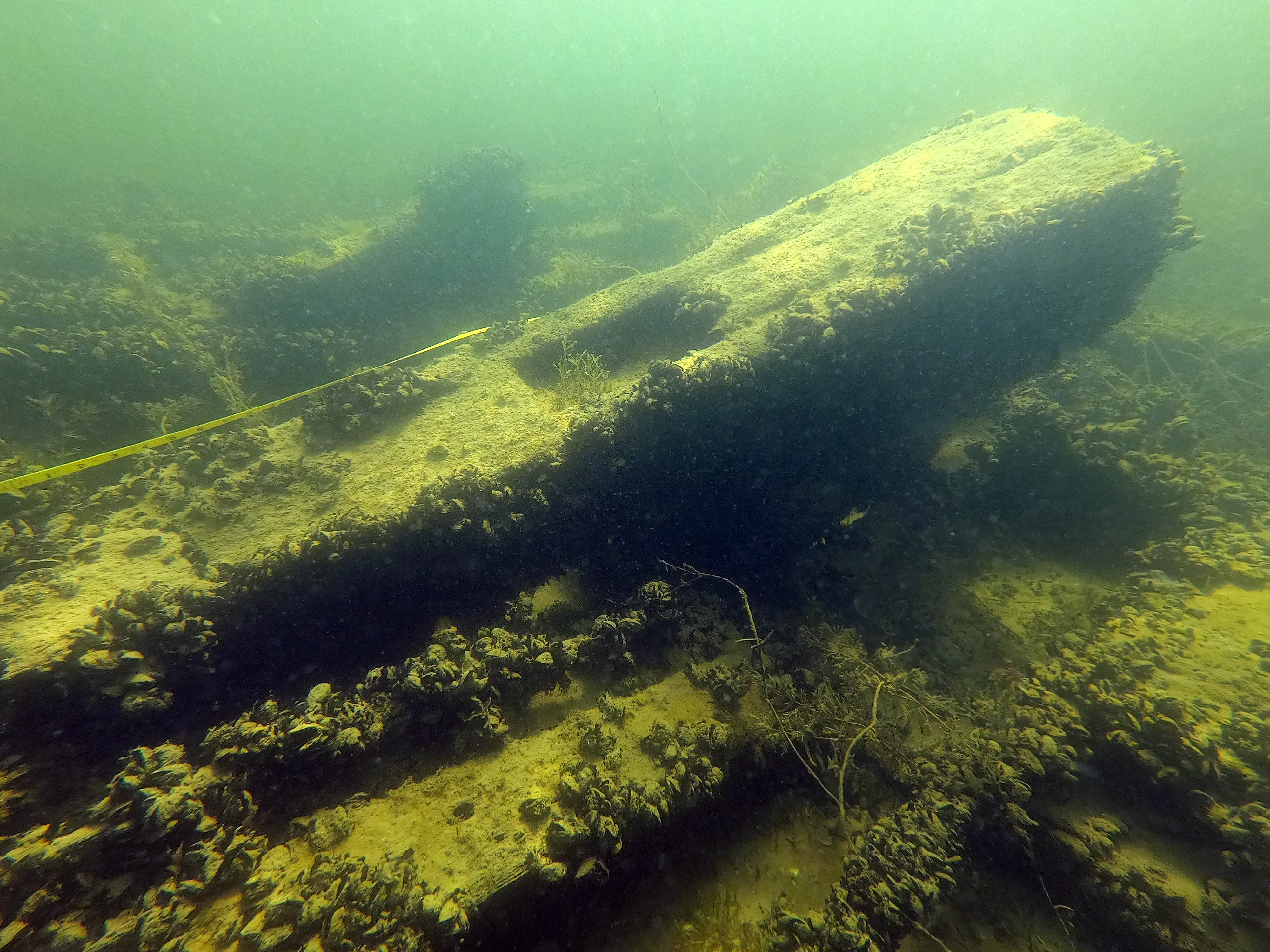
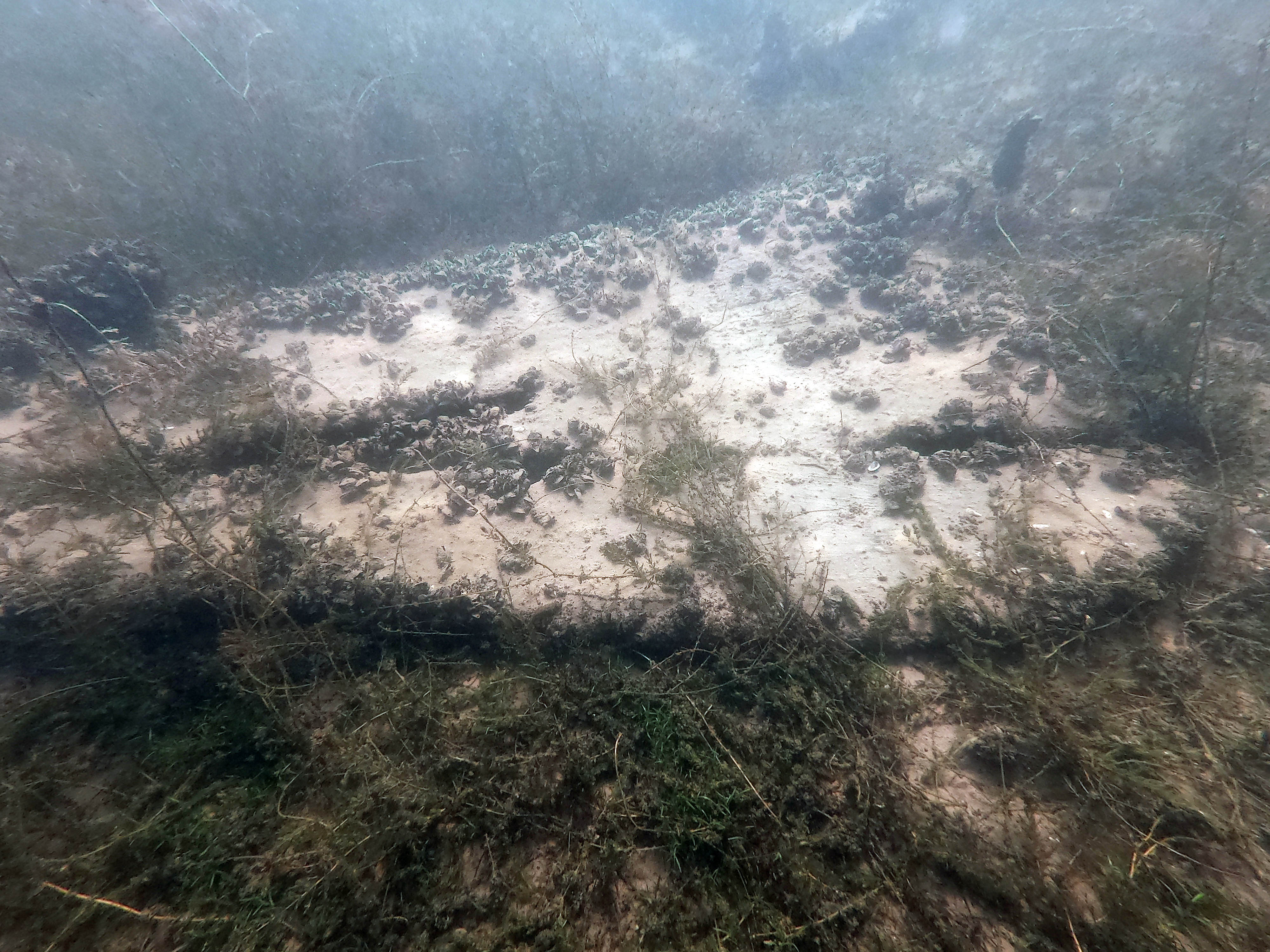
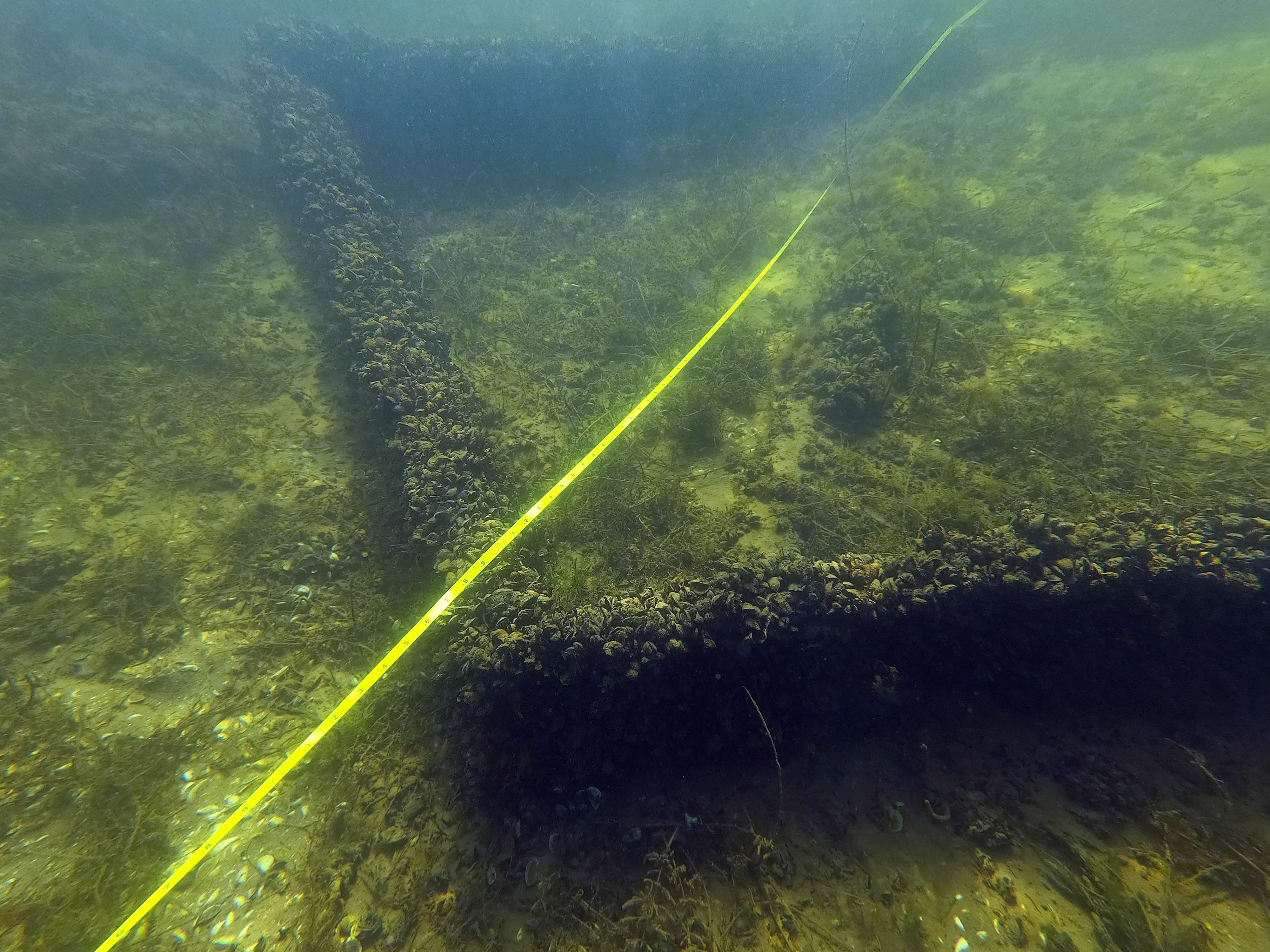
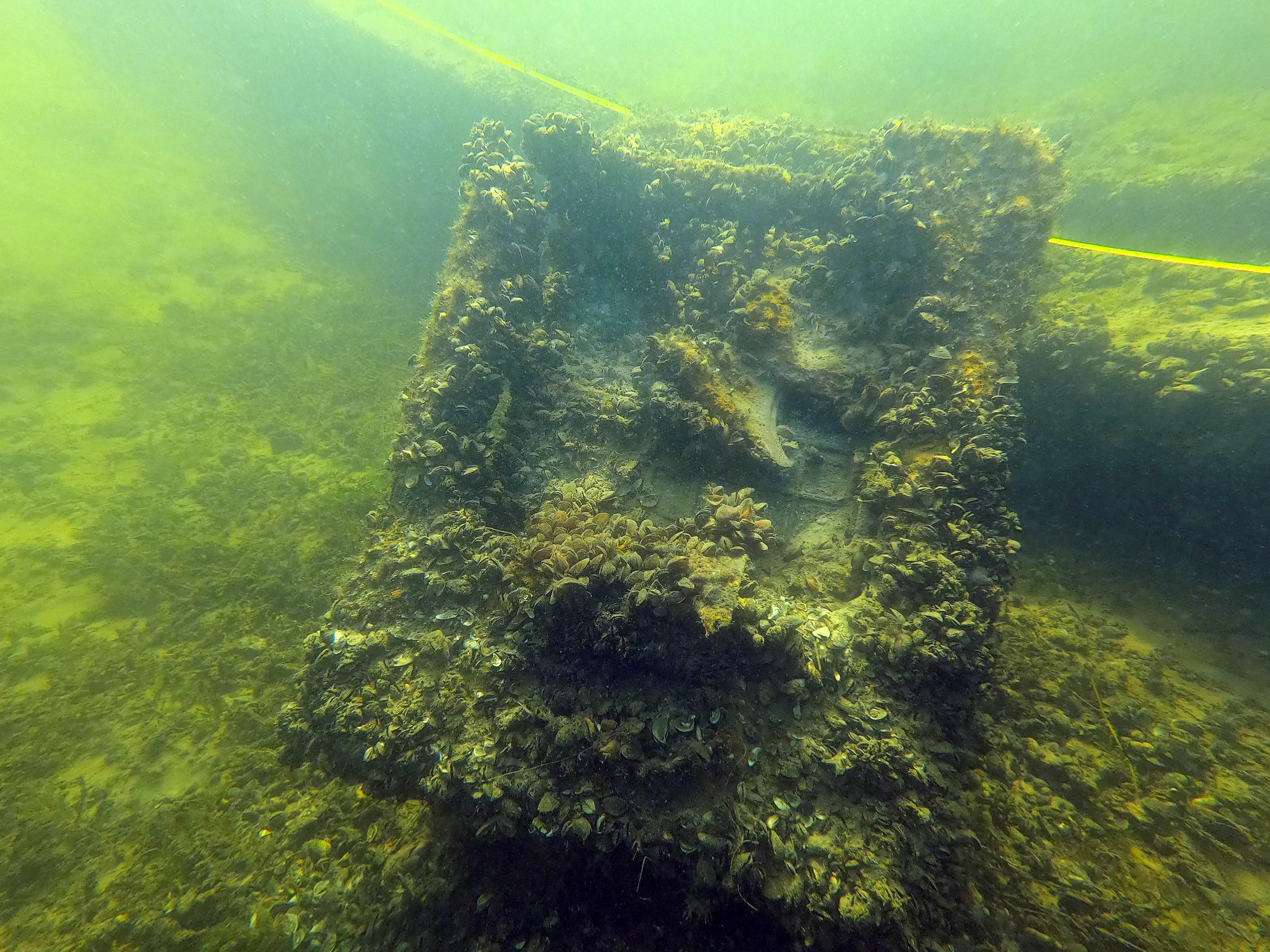
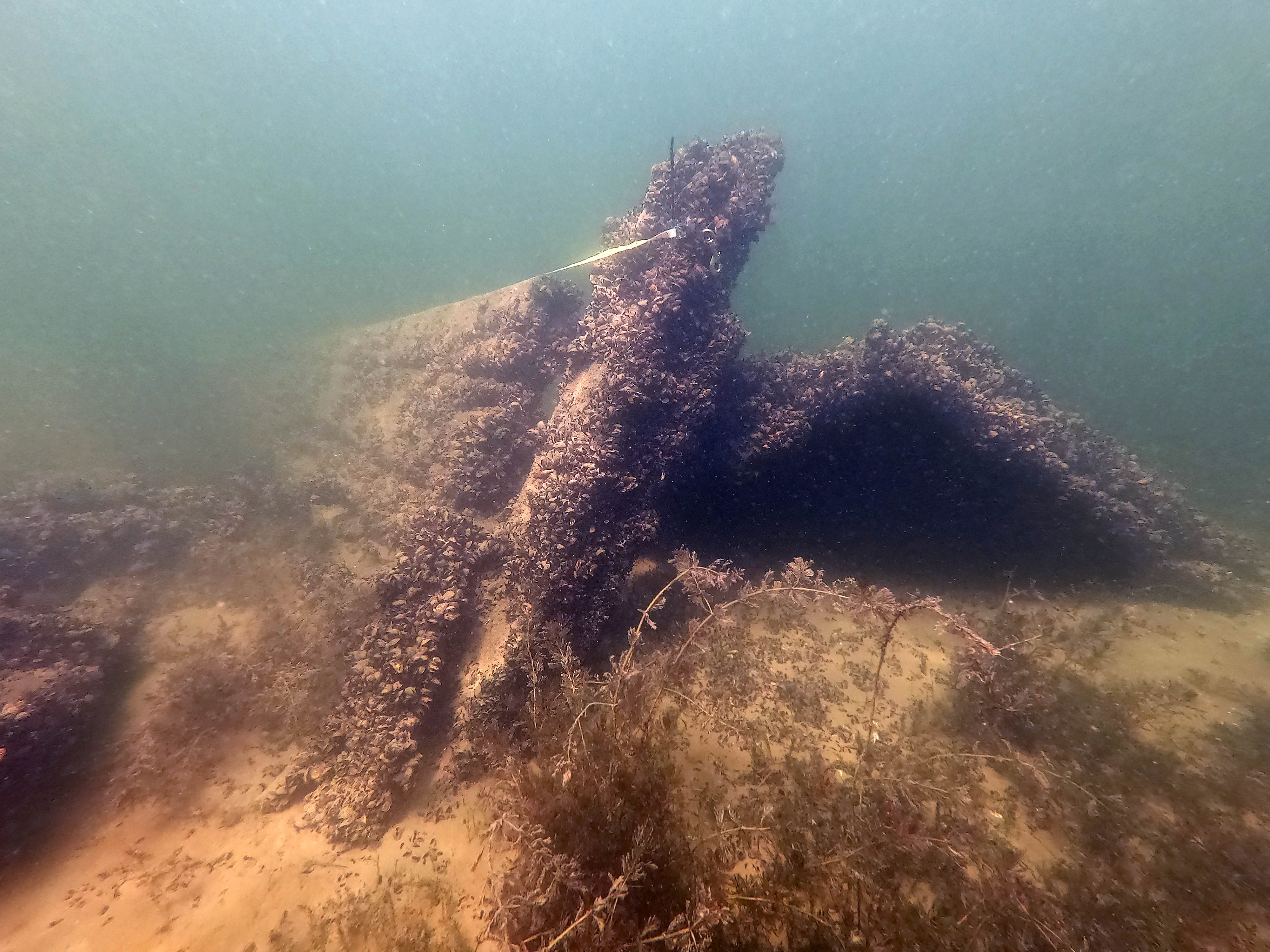
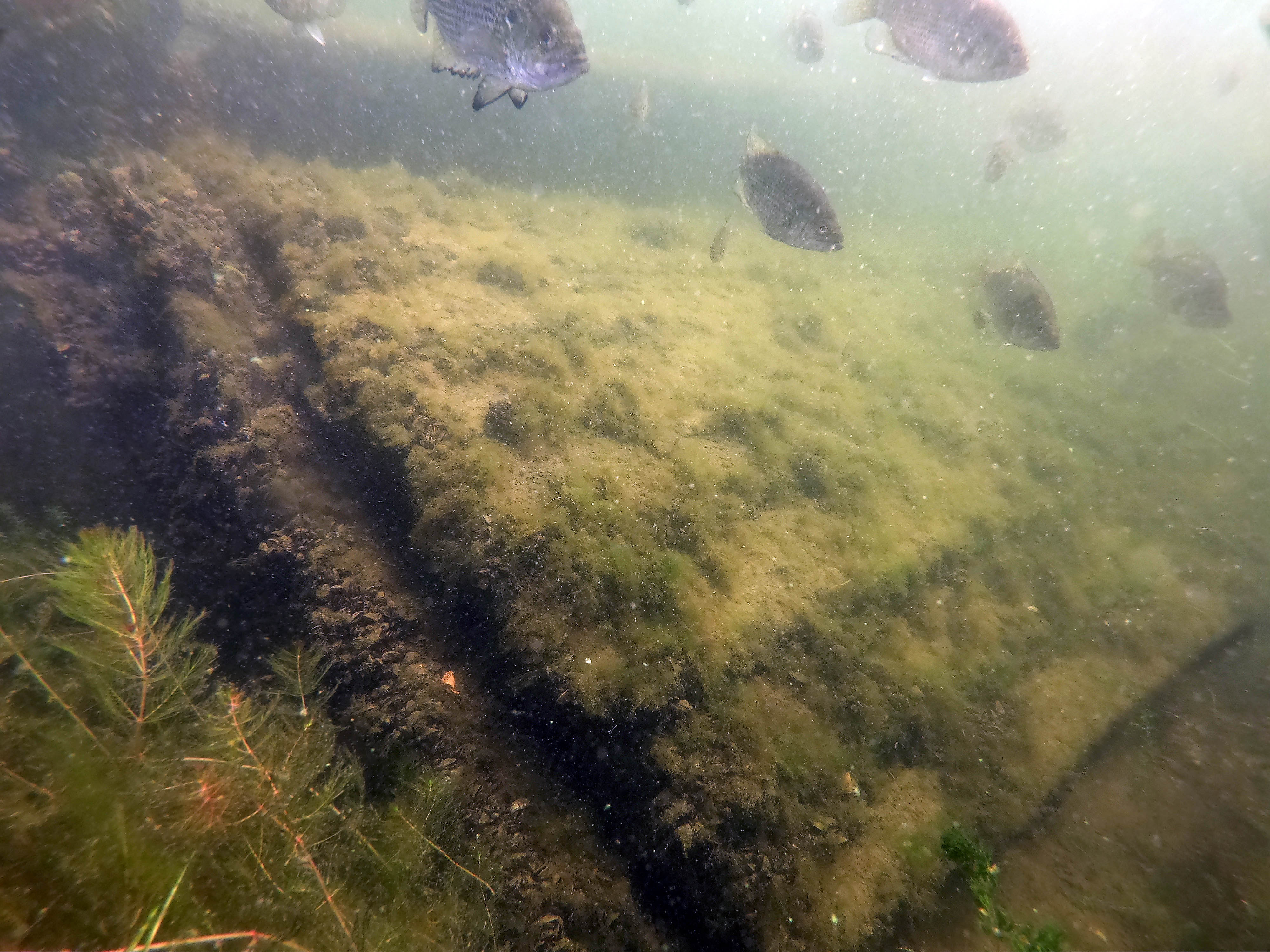
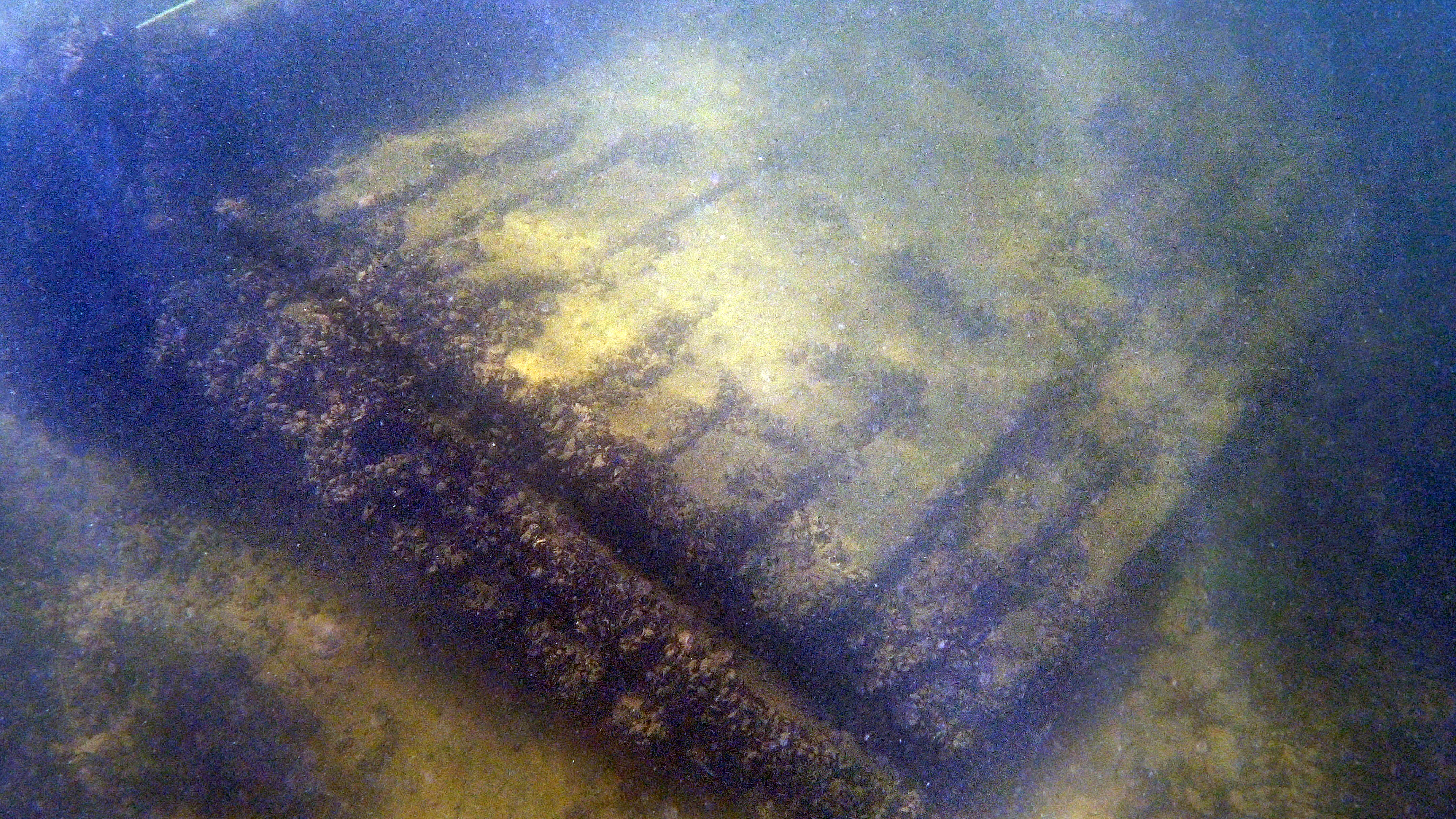

 Confirmed Location
Confirmed Location
 Unconfirmed location
Unconfirmed location